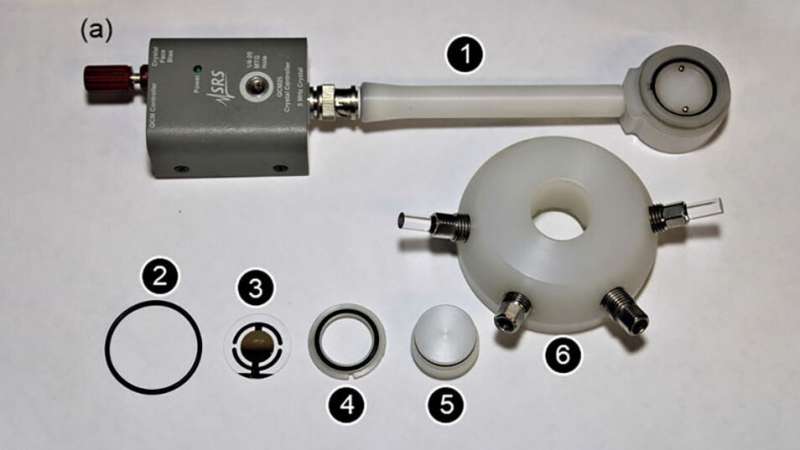Individual electrode components used to measure mass and thickness of a material during electrochemical operation. Credit: University of Missouri
Matthias Young, an assistant professor in the University of Missouri College of Engineering, recently designed two techniques for understanding the behavior of materials. The findings could lead to better batteries, improved water treatment systems and sensing applications that can measure the amount of nitrate in soil.
Measuring factors simultaneously
In order to develop new materials for applications such as lithium ion batteries, scientists have to understand how materials change dynamically under different charge conditions. It's a complex process that requires researchers to have insight into what's happening to materials in real time.
Young modified existing commercial equipment to be able to measure multiple behaviors simultaneously.
"I'm excited to use this new device to help us innovate materials for these applications, and I hope this device will enable the materials science community to accelerate discoveries in other applications," he said.
Young plans to make the low-cost device available to other material researchers.
An inexpensive way to measure disordered atoms
In a separate study, Young outlined a technique to more easily measure the atomic structure of materials. The process is unique and can measure the position of atoms—even when they are not in ordered patterns—without using a costly facility.
"What's cool about it is we can focus an electron beam down to a very small area—a couple hundred nanometers diameter—and measure the atomic structure of a disordered material within that area," he said.
Knowing the atomic structure of materials at high spatial resolution, as well as understanding the thickness and mass changes during charging and discharging, are critical to understanding and improving materials.
Provided by University of Missouri
























